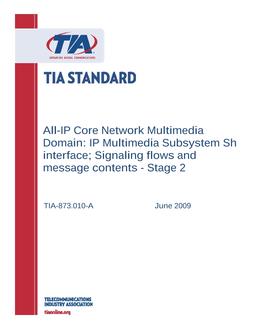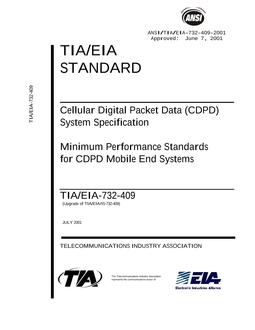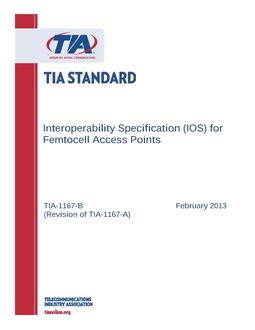-
-
Available Formats
- Availability
- Priced From ( in USD )
-
Available Formats
-
- Secure PDF 🔒
- Immediate download
- $99.00
- Add to Cart
-
- Printed Edition
- Ships in 1-2 business days
- $99.00
- Add to Cart
Customers Who Bought This Also Bought
-

TIA TIA-873.010-A
Priced From $123.00 -

TIA J-STD-022
Priced From $100.00 -

TIA ANSI/TIA/EIA-732-409
Priced From $141.00 -

TIA TIA-1167-B
Priced From $271.00
About This Item
Full Description
The technical requirements contained in cdma2000 form a compatibility standard for CDMA systems. They ensure that a mobile station can obtain service in a system manufactured in accordance with the cdma2000 standards. The requirements do not address the quality or reliability of that service, nor do they cover equipment performance or measurement procedures.
Compatibility, as used in connection with cdma2000, is understood to mean: any cdma2000 mobile station is able to place and receive calls in cdma2000 or IS-95 systems. Conversely, any cdma2000 system is able to place and receive calls for cdma2000 and IS- 95 mobile stations. In a subscriber's home system, all call placement is automatic. Similarly, it is preferable for call placement to be automatic when a mobile station is roaming.
To ensure compatibility, both radio system parameters and call processing procedures are specified. The sequence of call processing steps that the mobile stations and base stations execute to establish calls is specified, along with the digital control messages.
The base station is subject to different compatibility requirements than the mobile station. Radiated power levels, both desired and undesired, are fully specified for mobile stations, in order to control the RF interference that one mobile station can cause another. Base stations are fixed in location and their interference is controlled by proper layout and operation of the system in which the station operates. Detailed call processing procedures are specified for mobile stations to ensure a uniform response to all base stations. Base station procedures, which do not affect the mobile stations' operation, are left to the designers of the overall land system. This approach to writing the compatibility specification is intended to provide the land system designer with sufficient flexibility to respond to local service needs and to account for local topography and propagation conditions.
cdma2000 includes provisions for future service additions and expansion of system capabilities. This release of the cdma2000 family of standards supports Spreading Rate 1 and Spreading Rate 3 operation (see [2]).
Document History
-
TIA TIA-2000.1-F-1[E]
currently
viewing
Introduction to cdma2000 Standards for Spread Spectrum Systems- Most Recent
-
TIA TIA-2000.1-F
Introduction to cdma2000 Standards for Spread Spectrum Systems- Historical Version
-
TIA TIA-2000.1-E-2[E]
Introduction to cdma2000 Spread Spectrum Systems- Historical Version
-
TIA TIA-2000.1-E-1
Introduction to cdma2000 Standards for Spread Spectrum Systems- Historical Version
-
TIA TIA-2000.1-E
Introduction to cdma2000 Spread Spectrum Systems- Historical Version





